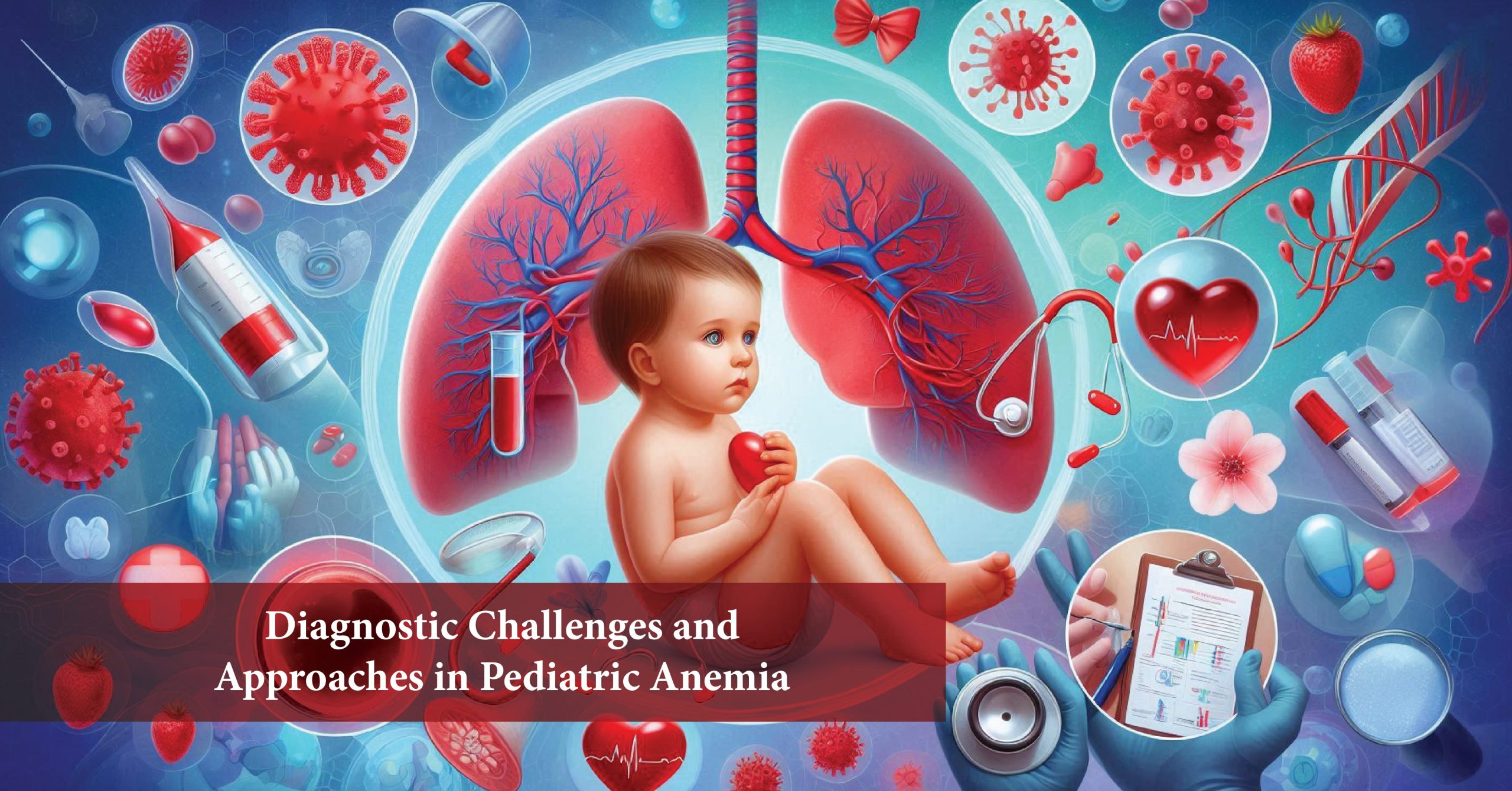Laboratory Tests
Complete Blood Count (CBC): The CBC has an influence on key data about hemoglobin levels, RBC indices (mean corpuscular volume, mean corpuscular hemoglobin), and reticulocytosis presence.
Peripheral Blood Smear: Looking at RBC shapes can help spot specific anemia types, like spherocytes in hereditary spherocytosis or sickled cells in sickle cell disease.
Iron Studies: Serum ferritin, transferrin saturation, and serum iron levels help tell apart iron deficiency anemia from anemia of chronic disease.
Vitamin Levels: Checking serum vitamin B12 and folate levels can diagnose megaloblastic anemia.
Hemoglobin Electrophoresis: This test is done to detect abnormal hemoglobin variants or when blood tests indicate that there could be an abnormal hemoglobinopathy.
Examination of the Bone Marrow: In the event that bone marrow failure syndromes are suspected to be the cause, then the doctor may wish to have a bone marrow biopsy performed to check on cellularity and find any abnormal cells.
Specialized Tests: Other tests may be necessary depending on the clinical situation. These may include enzyme assays for the detection of G6PD deficiency, gene studies for thalassemias, or immunologic tests for AIHA.
Challenges of Diagnosing Pediatric Anemia
The diagnosis of pediatric anemia is clouded by several complicating factors:
Overlapping Symptoms: Many forms of anemia present with similar symptoms and are difficult to distinguish based solely on clinical presentation.
Variable Presentation: Conditions like thalassemia vary in their degree of severity, even within members of the same family, which makes diagnosis very challenging.
Age-Related Differences: The etiology and features of anemia can vary significantly among infants, young children, and adolescents.
Limited Resources: In a resource-poor setting, access to specialized tests and state-of-the-art diagnostic facilities may be unavailable, and thus medical judgment along with a few fundamental laboratory tests is all one can rely on.
Emerging Diagnostic Technologies
Advancing diagnostic technologies enhances accuracy and efficiency in the diagnosis of pediatric anemia.
Genetic Testing: Next-generation sequencing and other genetic tests are increasingly being applied to identify responsible mutations. For example, hereditary anemia can be clearly diagnosed by such technologies, which leads to targeted therapies.
Point-of-Care Testing: Easy access to portable devices for measuring hemoglobin or other blood parameters will increase the chance of early diagnosis and management, especially in peripheral settings.
Biomarkers: Some new biomarkers are under study for the characterization of various anemias that may lead to more specific and less invasive diagnostic methods.
Conclusion
The diagnosis of anemia in children is complex and requires an understanding of the varied causes along with a systematic approach to workup. Integrate information gleaned from the patient’s history, physical examination, and a host of laboratory tests, and the healthcare provider has an excellent likelihood of identifying the correct etiology of the anemia and instituting appropriate treatment. Improvement in diagnostic technologies and a better understanding of the pathophysiology of anemia will further enhance our ability to manage this common but complex condition in children.
References
- Green, R. and Dwyre, D.M., 2015, October. Evaluation of macrocytic anemias. In Seminars in hematology (Vol. 52, No. 4, pp. 279-286). WB Saunders.
-
Grace RF, Zanella A, Neufeld EJ, Morton DH, Eber S, Yaish H, Glader B.
Erythrocyte pyruvate kinase deficiency: 2015 status report. Am J Hematol. 2015 Sep;90(9):825-30. doi: 10.1002/ajh.24088. Epub 2015 Aug 14. PMID: 26087744; PMCID: PMC5053227.
-
Fishbane SN, Singh AK, Cournoyer SH, Jindal KK, Fanti P, Guss CD, Lin VH, Pratt RD, Gupta A. Ferric
pyrophosphate citrate (Triferic™) administration via the dialysate maintains hemoglobin and iron balance in chronic hemodialysis patients. Nephrol Dial Transplant. 2015 Dec;30(12):2019-26. doi: 10.1093/ndt/gfv277. Epub 2015 Jul 13. PMID: 26175145; PMCID: PMC4656038.
-
Piel FB, Weatherall DJ.
The α-thalassemias. N Engl J Med. 2014 Nov 13;371(20):1908-16. doi: 10.1056/NEJMra1404415. PMID: 25390741.
-
Yawn BP, Buchanan GR, Afenyi-Annan AN, Ballas SK, Hassell KL, James AH, Jordan L, Lanzkron SM, Lottenberg R, Savage WJ, Tanabe PJ, Ware RE, Murad MH, Goldsmith JC, Ortiz E, Fulwood R, Horton A, John-Sowah J.
Management of sickle cell disease: summary of the 2014 evidence-based report by expert panel members. JAMA. 2014 Sep 10;312(10):1033-48. doi: 10.1001/jama.2014.10517. Erratum in: JAMA. 2014 Nov 12;312(18):1932. Erratum in: JAMA. 2015 Feb 17;313(7):729. PMID: 25203083.
-
Ohlsson A, Aher SM.
Early erythropoietin for preventing red blood cell transfusion in preterm and/or low birth weight infants. Cochrane Database Syst Rev. 2006 Jul 19;(3):CD004863. doi: 10.1002/14651858.CD004863.pub2. Update in: Cochrane Database Syst Rev. 2012 Sep 12;(9):CD004863. doi: 10.1002/14651858.CD004863.pub3. PMID: 16856062.
-
El Raziky MS, Ali A, El Shahawy A, Hamdy MM.
Acute hemolytic anemia as an initial presentation of Wilson disease in children. J Pediatr Hematol Oncol. 2014 Apr;36(3):173-8. doi: 10.1097/MPH.0000000000000127. PMID: 24577547.
-
Vagace JM, Bajo R, Gervasini G.
Diagnostic and therapeutic challenges of primary autoimmune haemolytic anaemia in children. Arch Dis Child. 2014 Jul;99(7):668-73. doi: 10.1136/archdischild-2013-305748. Epub 2014 Mar 5. PMID: 24599068.
